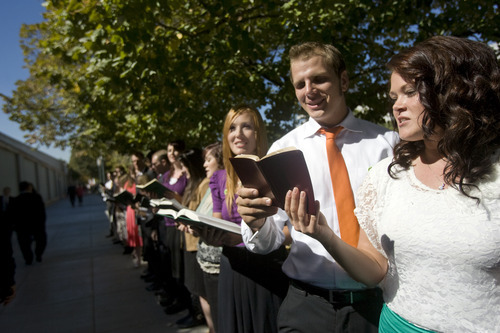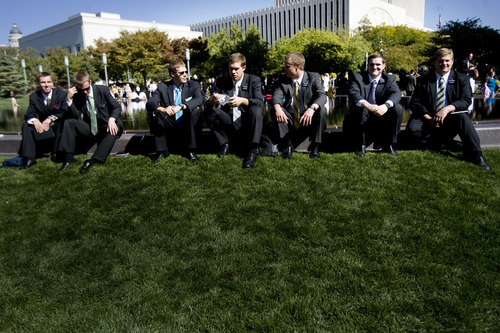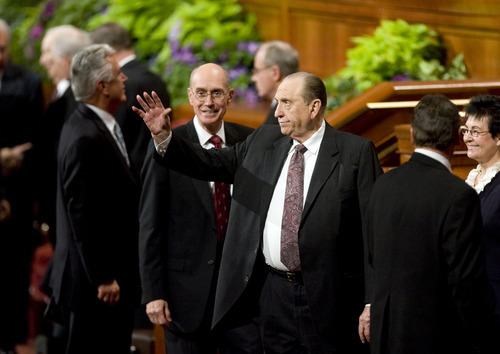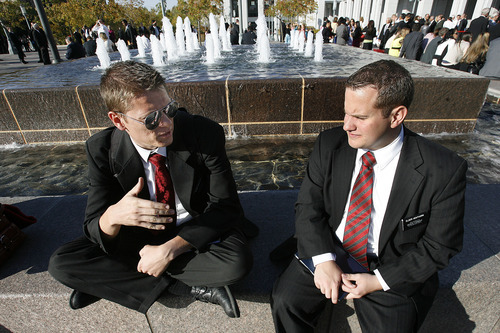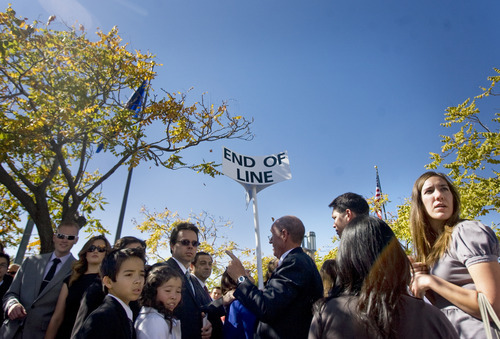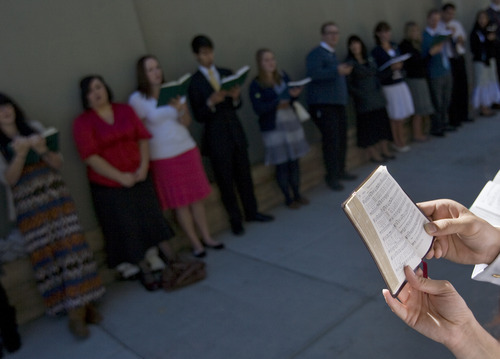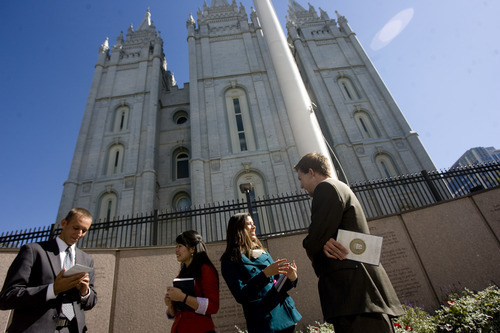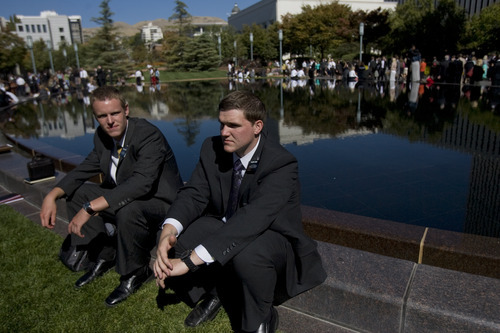This is an archived article that was published on sltrib.com in 2012, and information in the article may be outdated. It is provided only for personal research purposes and may not be reprinted.
It may take years to see the full impact from the announcement that the LDS Church is lowering the age for full-time missionary service, but the Utah-based faith is clearly preparing for one immediate consequence: a flood of new, younger missionaries.
Just hours after church President Thomas S. Monson announced that young men could serve a mission at age 18 (down from 19) and young women at 19 (down from 21), social media and the blogosphere were abuzz with young Mormons who were suddenly planning to put in their applications for service.
LDS families began talking about altering summer schedules to get ready to say goodbye to their kids years earlier than they expected. And Mormon leaders couldn't be more excited by the prospect.
"I am bordering on the giddy," LDS apostle Jeffrey R. Holland said at a news conference Saturday. "We expect this new option will be exercised by many, and the numbers of missionaries could increase dramatically."
Currently, the LDS Church has more than 58,000 missionaries, which is the highest tally in many years.
Ten years ago, apostle M. Russell Ballard said at the church's October General Conference that the faith was "raising the bar" on missionary standards, stating that unprepared or unrepentant youths would no longer be able to serve.
Two years after that speech, the church's global missionary force dropped from nearly 62,000 to about 51,000, partly due to elevated standards and partly due to a demographic shift.
That lower number remained fairly constant until recently, said Matt Martinich, an independent researcher who tracks LDS Church growth.
"From 2004 to 2009 the full-time missionary force ranged from 51,000 to 53,000," Martinich said. By the end of 2011, there were 55,410 full-time missionaries. Women were thought to comprise about 20 percent of those.
Holland noted at the news conference that in the last two years, the church has seen a 6 percent jump in young male missionaries, a 12 percent spike in young females and an 18 percent leap in senior missionaries (retired couples).
Now, the church is anticipating even more missionaries — especially young women.
"We are expecting a glut," Holland said at the news conference. "Those [young women] who do serve are stunningly successful. … Personally, I am absolutely delighted if this change in policy allows many, many more young women to serve."
To accommodate all the newcomers, the church plans to hire more language instructors and increase housing at its various missionary training centers, including the flagship facility in Provo, which is already slated for expansion.
The church is also reducing by one-third the amount of time missionaries spend in those training centers, sending missionaries to their assigned countries for a 12-week course administered by mission presidents.
LDS officials expect to increase the number of missions from 347, Holland said, but will wait and see how many new missionaries they have.
David Campbell, an LDS professor at the University of Notre Dame who has polled extensively on American religions, believes this change may help keep more young Mormons involved in the religion.
"About 60 percent of people raised in the LDS faith still identify as Mormons as adults. While that is high, relative to other religions, that still means 2 in 5 leave the faith," Campbell wrote Sunday in an email. "Unlike other religious traditions, though, the LDS Church has some unique levers it can pull to keep its young people engaged with the faith."
What seems to work best, he said, is for young people to be immersed in a faith's social network.
"To the extent that these and any other changes enacted by the LDS Church result in a thickening of the networks that young Mormons form with one another," Campbell said, "I would expect the retention rate to rise."


